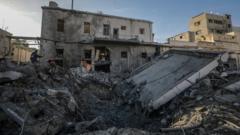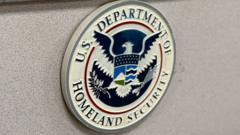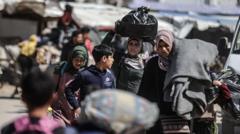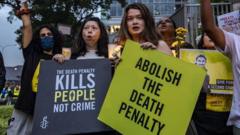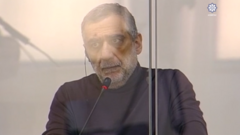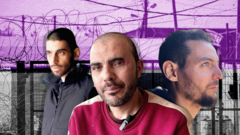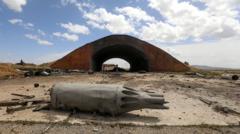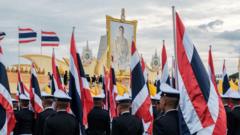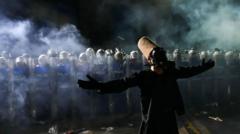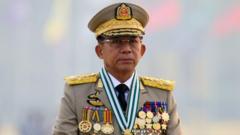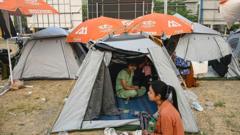Testimonies from former detainees, including Mir Ahmad Bin Quasem, highlight the existence of a secret prison system controlled by an elite police unit, raising urgent calls for justice amidst fears of ongoing reprisals.
Dark Secrets Unraveled: Bangladesh's Hidden Prison Network Exposed

Dark Secrets Unraveled: Bangladesh's Hidden Prison Network Exposed
Investigations reveal a series of clandestine jails near Dhaka's airport, connected to a brutal crackdown on dissent.
His memories become the key to a dark truth that lies hidden just minutes from Dhaka's bustling international airport. When investigators broke down a hastily constructed wall, they unearthed secret jail cells—a chilling reminder of the country’s past political repression. This discovery was only brought to light thanks to the recollections of Mir Ahmad Bin Quasem, a vocal critic of the previous regime, who had spent eight harrowing years trapped within this covert prison.
Quasem was blindfolded for most of his confinement, relying on sounds to navigate his harrowing reality. One distinct memory struck him during his imprisonment: the roar of airplanes landing nearby. This auditory link ultimately led investigators to a military base adjacent to the airport. Inside, they found a small, fortified structure where detainees were allegedly kept out of sight, hidden in plain view.
According to the investigators, the secret prison was operated mainly by the Rapid Action Battalion (RAB), a renowned counter-terrorism unit, which allegedly acted under the direct orders from former Prime Minister Sheikh Hasina. "All enforced disappearance cases were executed with Hasina's knowledge," alleged Tajul Islam, chief prosecutor for the International Crimes Tribunal of Bangladesh, in an exclusive interview.
Despite being released from imprisonment, Quasem and his fellow ex-detainees live in fear of their captors, who remain at large. Quasem, always cautious when stepping outside, shares how he avoids drawing attention, frequently dressing incognito. "The constant anxiety is suffocating," he confided.
As journalists gained access to the hidden jails, it became apparent that Quasem's story was not isolated. With over 500 similar cells reported across the country, the systematic nature of these operations shocked many. Quasem vividly recalls his unlit cell—its claustrophobic dimensions, dominated by broken tiles and debris, a stark portrayal of misery.
Describing his time in captivity, Quasem shared, "I felt buried alive, entirely disconnected from the outside world." These ghastly images resonated with others like Atikur Rahman Rasel, who recounted his own torturous experiences of capture and confinement due to his political ties. Rasel, now recovering with scars on his body, recounted despair and anguish that weighed heavily on him.
As the dust settles from widespread protests that led to former Prime Minister Hasina's ousting, the calls for justice echo loudly. Survivors now detail their experiences of torture and abuse, attributing their disappearances and subsequent trauma to the political climate orchestrated by Hasina's regime.
The search for accountability remains tenuous, with over 700 cases of enforced disappearance reported, many more unrecorded. As survivors like Iqbal Chowdhury express their fears of retaliation, the ghost of silence looms ominously over Bangladesh. Even with the possibility of trials emerging, the psychological shadows from past horrors threaten to suffocate progress for a nation striving to reclaim its freedom.
"Justice should be served," demands Quasem, urging the world to comprehend the gravity of the atrocities endured by so many. Yet for many, like Rahmatullah, the fear seeded by confinement remains, a reminder that the emotional scars carved by past offenses may never truly fade away. In this significant chapter of Bangladesh's tumultuous history, the struggle for healing and closure continues as a profound test of resilience for its people.

